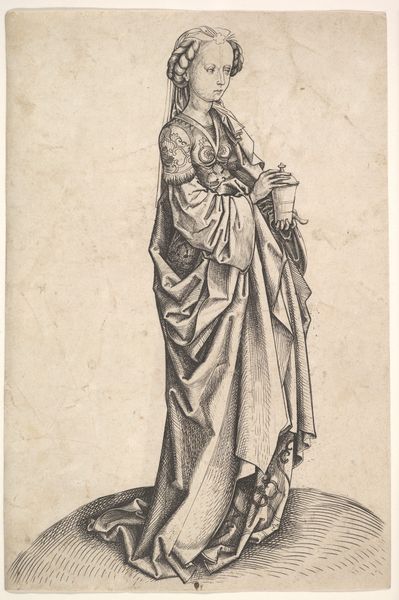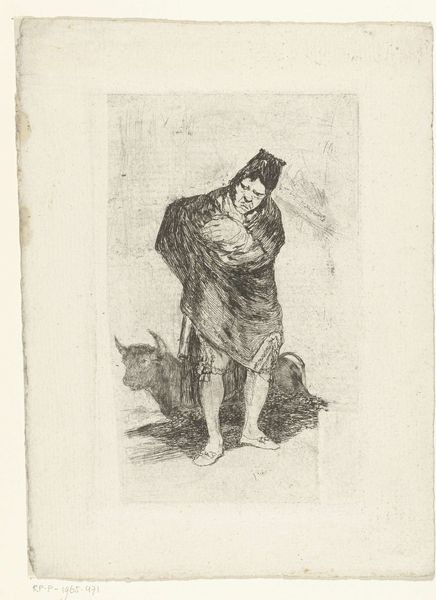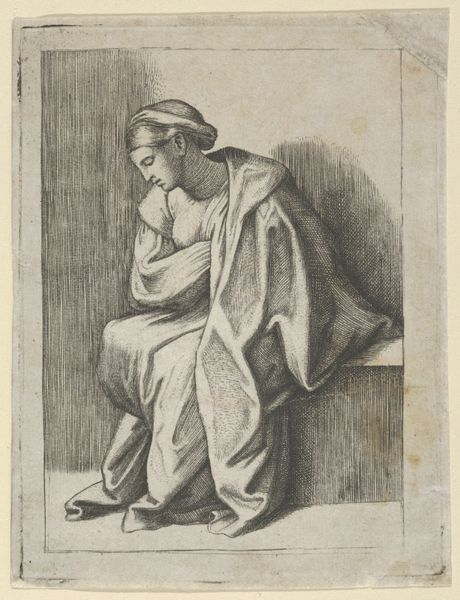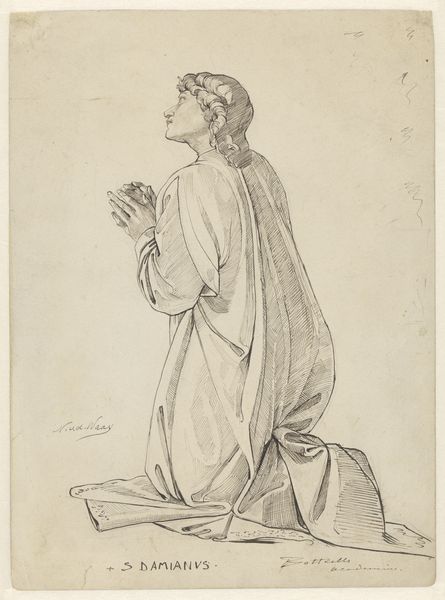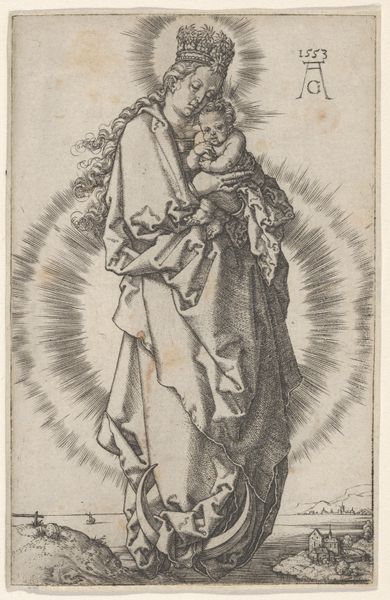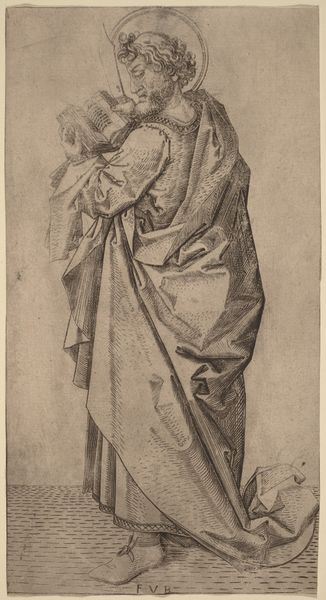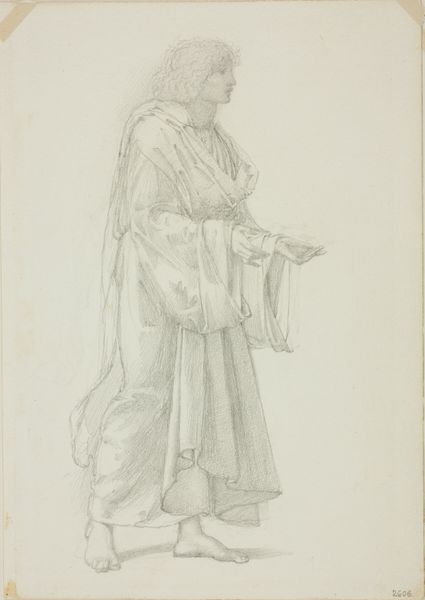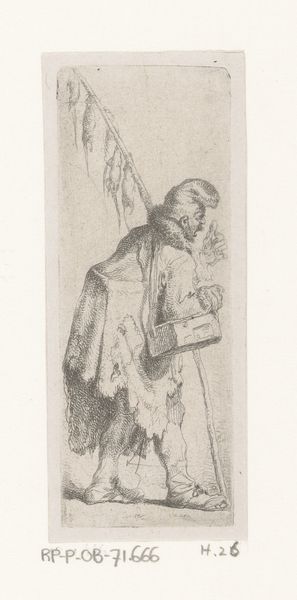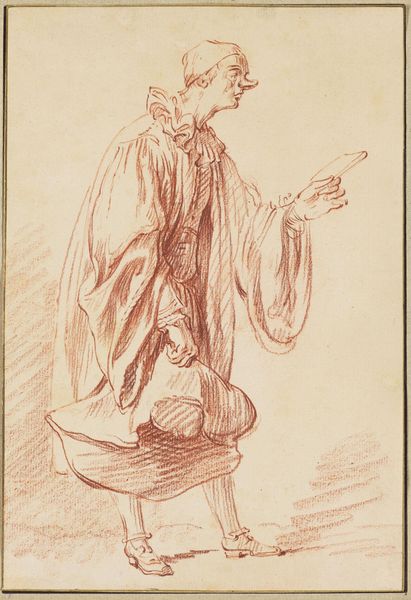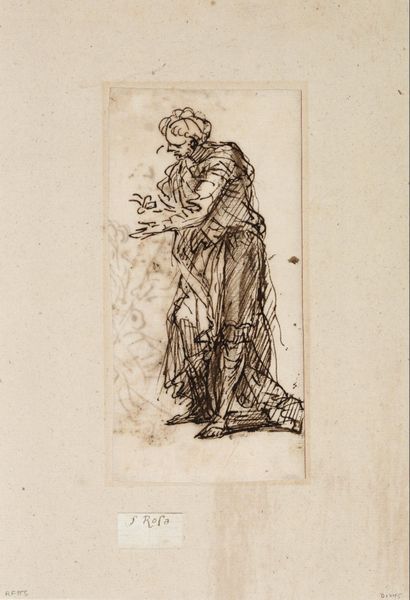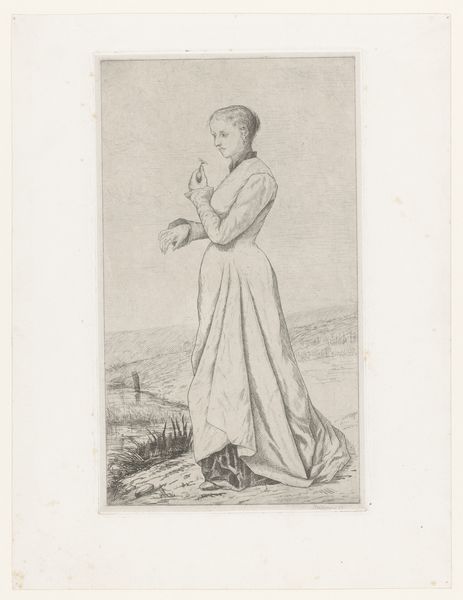
drawing, print, paper, pencil, graphite
#
portrait
#
drawing
# print
#
pen sketch
#
pencil sketch
#
figuration
#
paper
#
pencil drawing
#
pencil
#
graphite
#
portrait drawing
#
pre-raphaelites
#
academic-art
Dimensions: 273 × 261 mm
Copyright: Public Domain
Editor: So, this is Edward Burne-Jones's "Kneeling Draped Figure," dating from around 1865 to 1870. It’s a graphite drawing on paper, and what strikes me immediately is this figure’s stillness and the incredibly detailed fabric. How do you read the imagery of this drawing? Curator: It's interesting you point that out; Burne-Jones was deeply engaged with classical ideals. Draped figures are prevalent throughout history, often signifying mourning, but sometimes prophecy and revelation. The act of kneeling –what emotional resonance do you associate with the pose? Editor: Humility, perhaps? Vulnerability? Maybe even penance? Curator: Exactly! And what does the way she clasps her hands at her chest tell you? The folds in the cloth, almost burying her, adds another layer. This echoes the visual vocabulary of earlier devotional art; what if it's more of an interior journey she’s taking? Editor: So, you're seeing this as a psychological portrait, then? Instead of just a study of form? Curator: Absolutely! The Pre-Raphaelites, including Burne-Jones, were fascinated by the symbolic language of the past. Even the simple act of depicting a kneeling figure evokes centuries of artistic and spiritual tradition. Notice the shadow; the artist renders it softly, it feels almost comforting. Editor: I see it now. The drawing transforms from a simple sketch to a figure caught in reflection. Curator: Precisely. It's a layering of visual and emotional weight. Think about how our contemporary ideas are often built upon this collective memory. Editor: It’s fascinating how a simple pose, rendered so delicately, can unlock so much cultural understanding. I'll definitely view these studies with new eyes now.
Comments
No comments
Be the first to comment and join the conversation on the ultimate creative platform.
